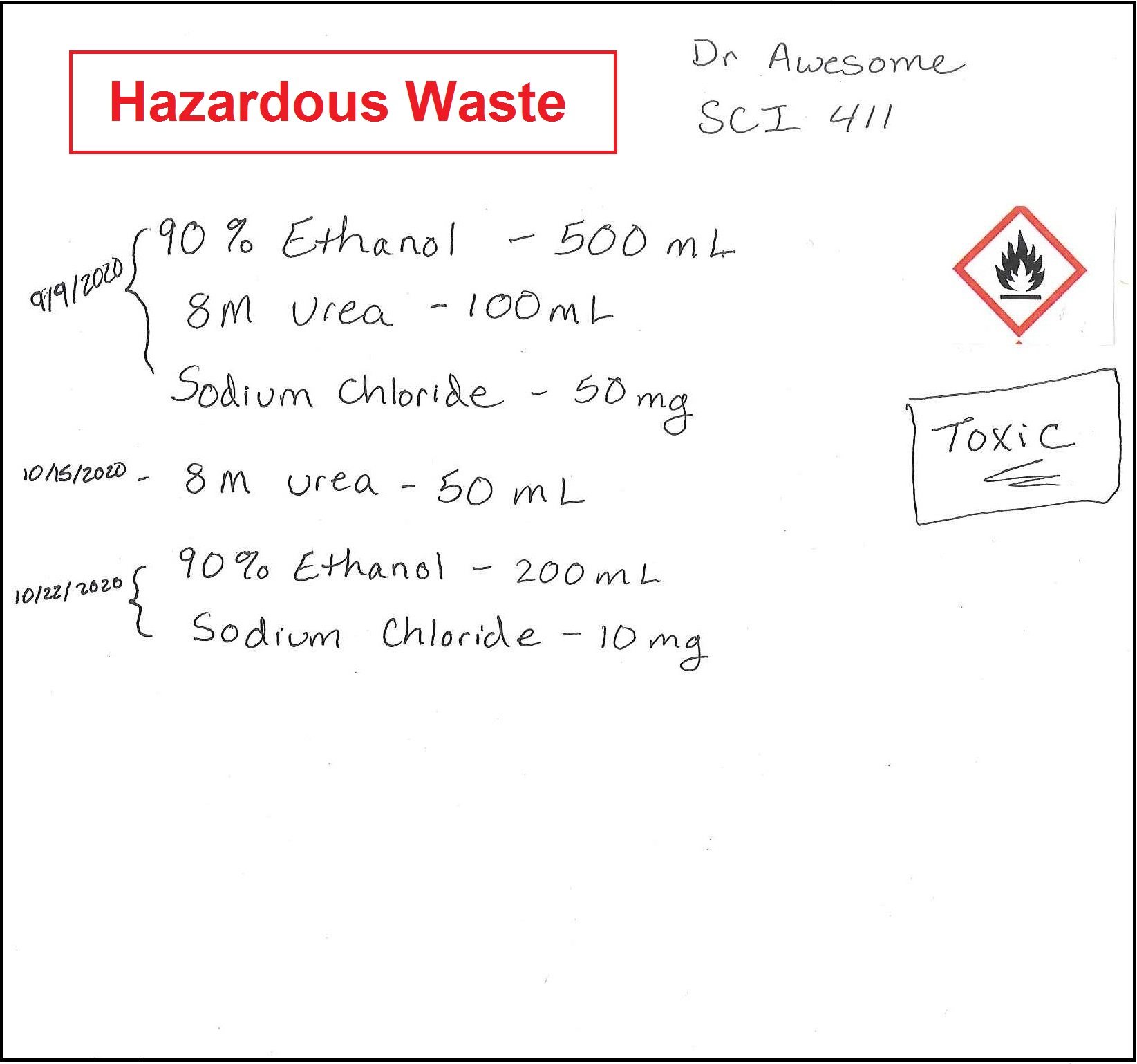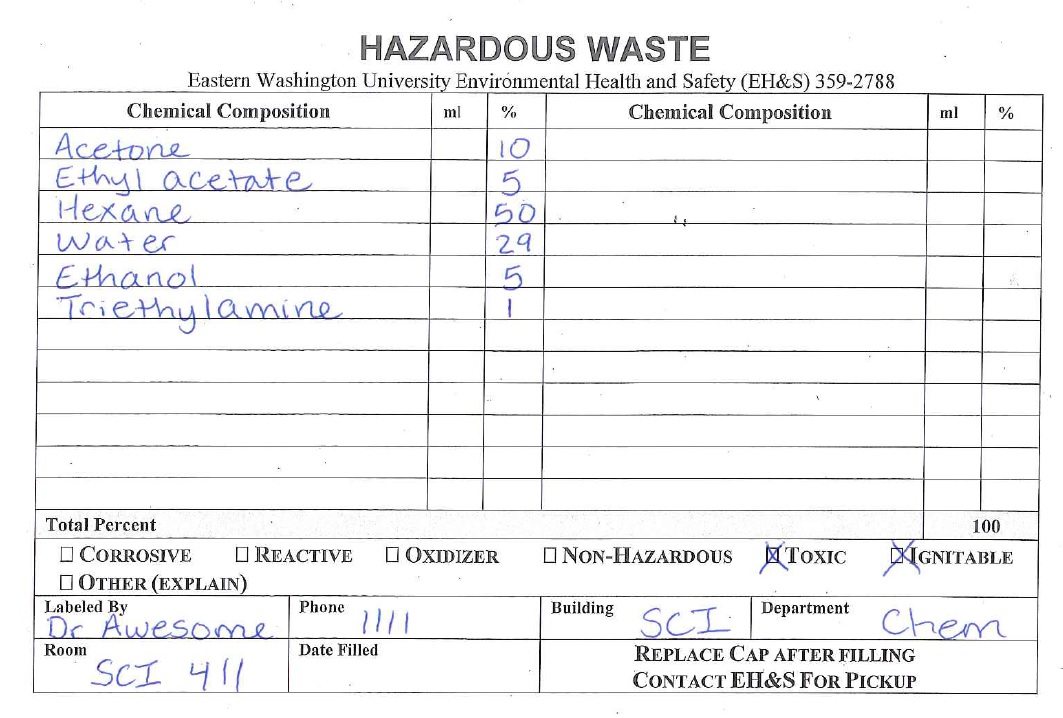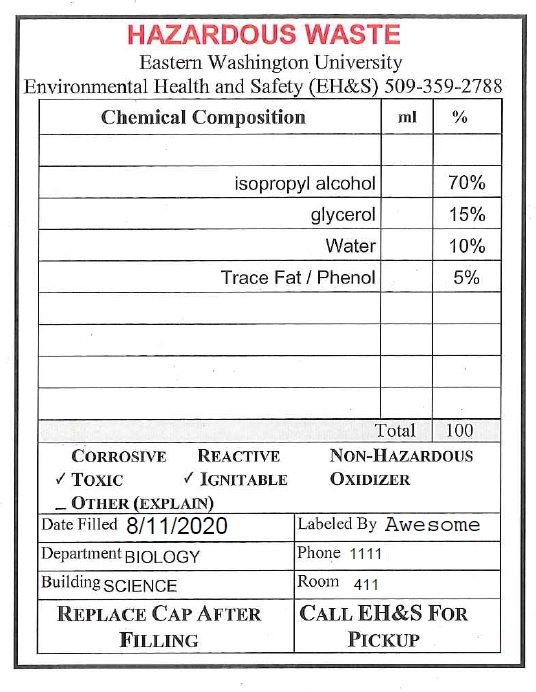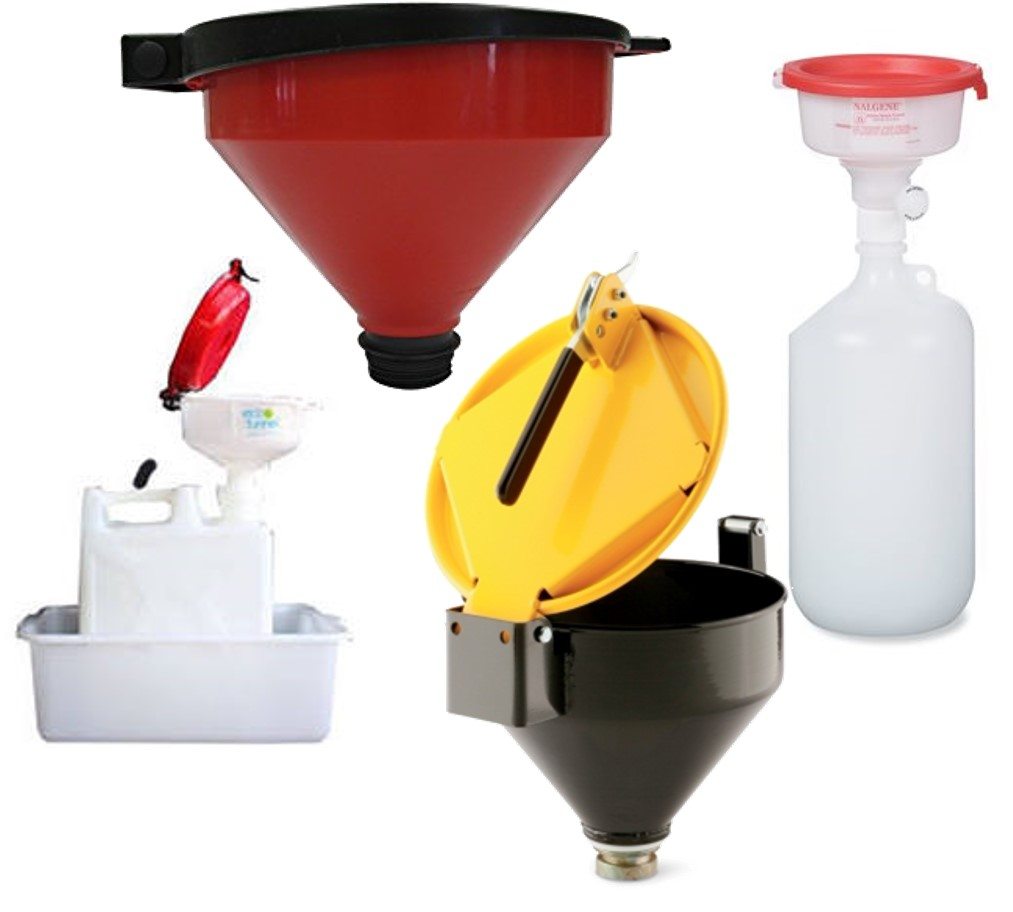Individuals who generate hazardous waste are responsible for all aspects of their waste until it is collected by Environmental Health & Safety. If you generate waste at Eastern there are several things you need to do in order to safely manage your waste.
Waste Generator Responsibilities
There are three aspects to waste that generators are responsible for:
Waste generators are also required by Washington state law to attend Hazardous Waste Training annually.
Because Washington state has strict hazardous waste regulations, all laboratory and shop waste is considered hazardous until it is proven to be otherwise. No waste from laboratories or shops can be discarded into the general trash or into the sink without a disposal permit.
If you generate waste that you believe to be non-hazardous, you can email EH&S a Waste Evaluation Request for your waste. If your waste is determined to be non-hazardous you will be allowed to dispose of it according to your disposal permit.
Labeling
Waste labels must be present on all waste containers, even non-hazardous waste containers, and they must be accurate to the best of your ability.
For containers that are being filled, where adding a label would make adding additional information difficult, labels can be next to the waste container. If the label is not attached to the container there must be a clear way to identify that the label goes with the container. For example a note on the label that says "Label for Waste A" and a matching "Waste A" label on the container.
Waste labels must contain the following information:
- The words "Hazardous Waste" (or "Waste" on non-hazardous items)
- Hazards associated with the waste, for example:
- Toxic
- Flammable
- Corrosive
- Explosive
- Non-hazardous
- Waste components
- Each chemical or substance added to the container
- The amount (preferably in percentage) of those chemicals
- Name of waste generator or PI and location of waste generation
If you need waste or hazard labels, contact EH&S and we can provide them.
When the container of waste is full, a waste pick-up request should be submitted to EH&S. If you date the label, EH&S has three days from the date on the label to remove the waste from the lab and 90 days to have the waste removed from campus.

Example hazardous waste label. This container being filled with similar experimental waste, but the components are not exactly the same every time. When full the amount of each component should be added together.

Example hazardous waste label, hand written.

Example hazardous waste label, typed.
Storage
Containers
Waste must be placed into compatible containers; the container must not react with the waste. If you are reusing containers, the previous contents of the container needs to be compatible with the waste. (When reusing containers, the previous labels need to be completely obscured.)
Examples include:
- Hydrofluoric acid etches glass, so hydrofluoric acid waste should not be stored in glass bottles.
- Empty nitric acid bottles should not be used to store organic waste. Residual nitric acid could cause an explosive mixture when the organic waste is added.
Waste containers must be in good condition. Waste should not be stored in rusting or damaged containers.
If you need appropriate storage containers, please contact EH&S and we can help.
Segregation
Just like with pure chemicals, waste containers need to be segregated by type. For example, acidic and basic wastes or organic and inorganic wastes should not be stored next to each other.
There needs to be physical separation between waste types. At a minimum waste types should be placed into separate secondary containment, like Nalgene tubs. Ideally waste types should be placed into different areas.
Remember, most waste does not need to be stored in the fume hood. Noxious or volatile waste may need to be in the hood at all times, but most waste can be moved into the hood when adding to the container and then stored in more appropriate locations. Just make sure the waste holding areas have signs.
Management
Waste generators are responsible for the management of their waste containers and waste storage areas.
Container Management
Containers must be closed as soon as waste is added and must remain closed at all times.
A waste container can remain open only in situations where pressure may be generated immediately after waste is added to the container.
- Under these conditions, containers can be left open until any reaction taking place is complete.
- A sign should be placed next to the open waste container indicating when the waste was added and when the container will be closed.
Any waste that has continuous pressure generation concerns will need to have a vented cap. The image below has two examples of vented caps.

Funnels need to be removed after the waste is added or they need to be securely attached to the waste container and have a lid. The image below has several examples of funnels that can remain attached to a waste container

Storage Area Management
All waste storage areas must be inspected at least every seven days to ensure that containers are in good condition and stored appropriately.
Waste generators must keep an inspection log with the date of their inspection, the name and signature of the person inspecting the waste, and a note of any observations. Actions taken to correct problems identified must be included with the observation notes. These inspection logs must be kept for five years from the date of inspection.
- Use the Generator Inspection Record to record weekly inspections.
- When inspection logs are full a copy should be sent to EH&S for full retention.
- At waste storage areas, a year of inspection records should be available.

